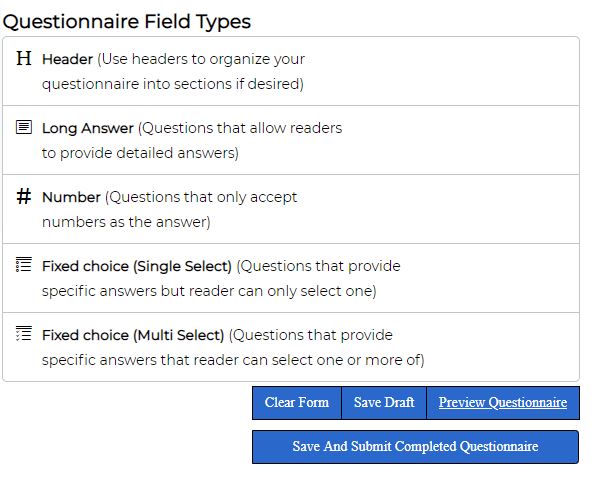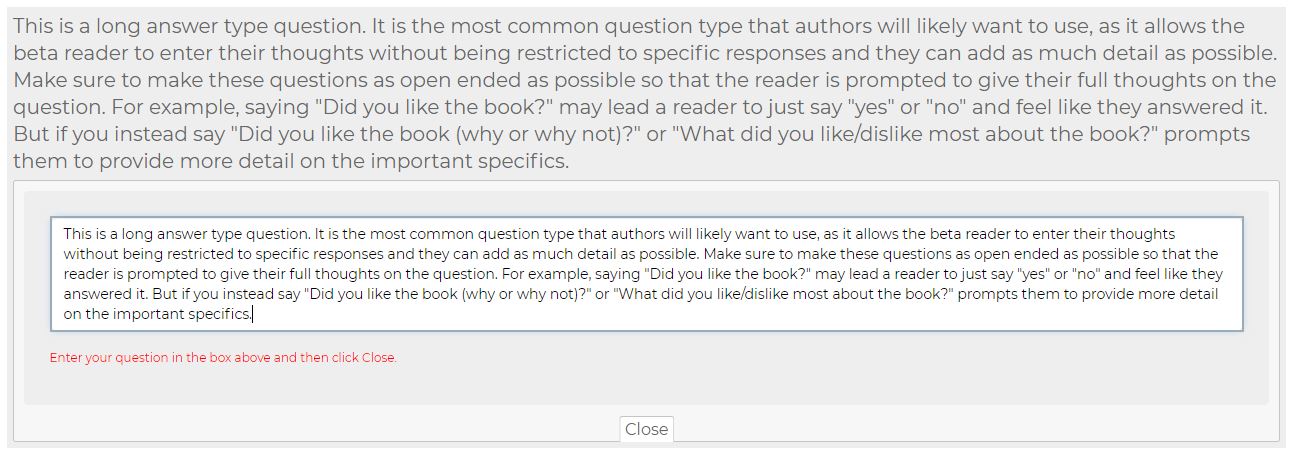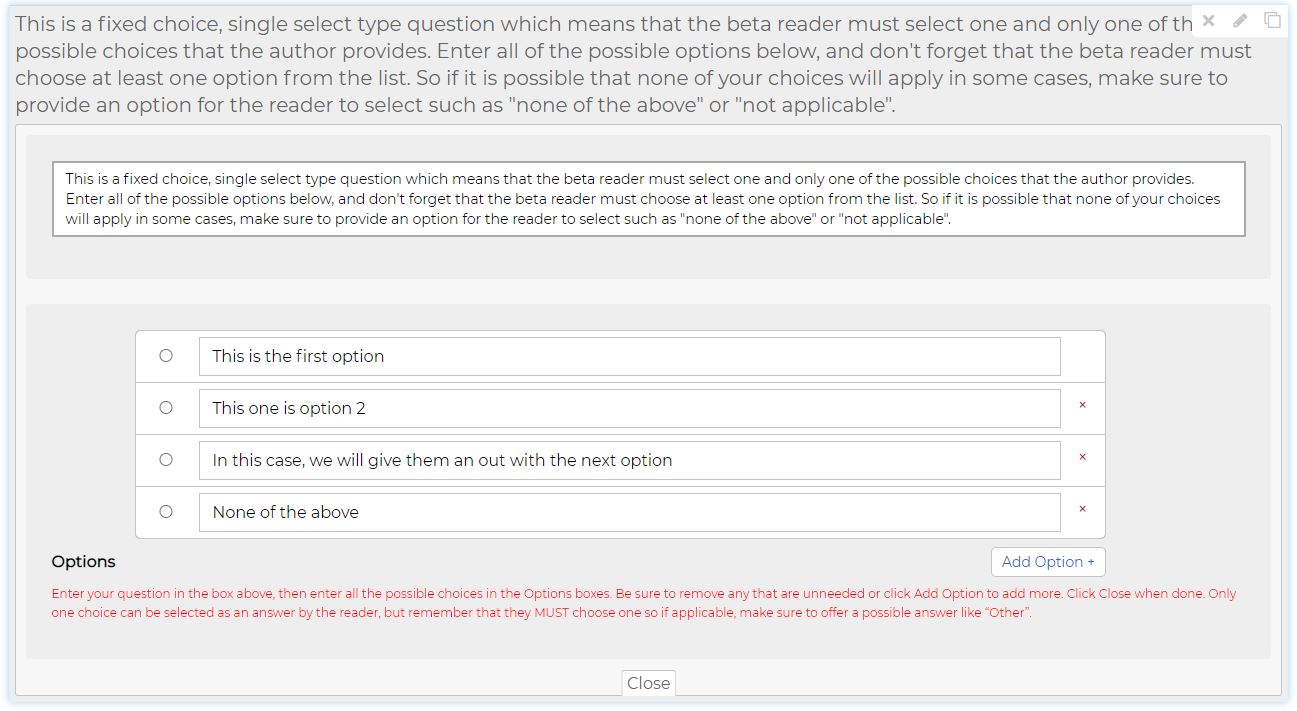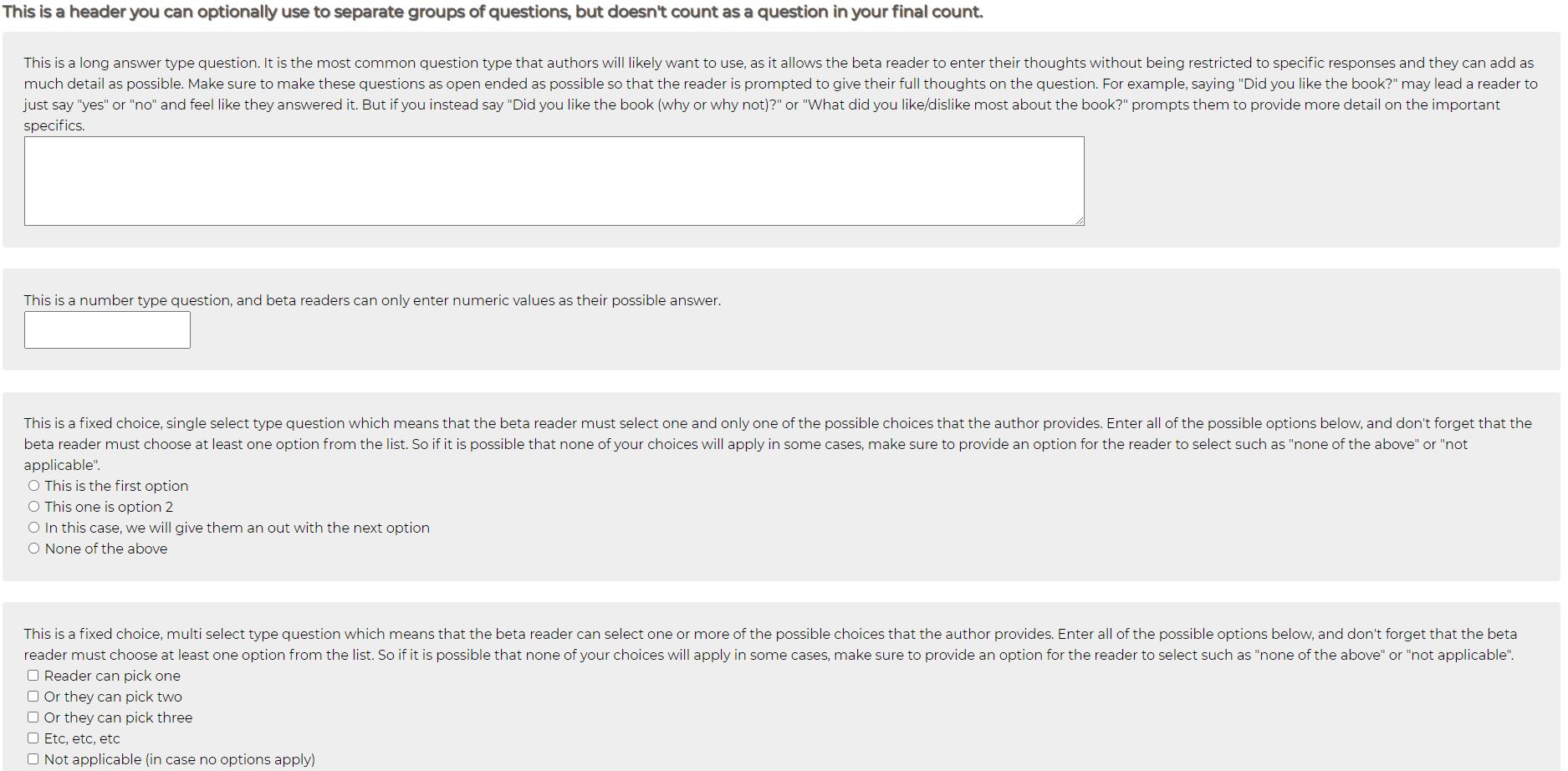These are the fields on the beta reader order form and the expected values. Only the fields with an Asterix(*) next to it are required at the time of booking.
Email Address*
This should pre-fill with the email address you used when you created your author account, but you can edit it with a different email if you wish. Note though, that the email you enter here is the one that all confirmations and reminders will be sent to, as well as the final Paypal invoice.
Genre*
Select all of the genres that your book fits into (max 3), and only beta readers that have signed up for any of those genres will be invited to sign up for this book.
Book Title*
The title of your book.
Pen Name*
The author name on the book. This can be your real name, or your pen name – whatever you put as author for this book.
Book Blurb/Description*
Please enter the blurb or description for your book. Even if your final blurb or description is not finalized, potential beta readers will be using this information to decide whether they want to read your book. You can use this as an opportunity to test your blurb/description and ask questions about it on your questionnaire later, if you wish.
Sub Genres/Sub Categories*
This is a free form field that you can use to further define your book within the overall genre you entered. Please separate with commas and capitalize each sub category.
Example: Contemporary Romance, Small Town, Bad Boy Billionaire
Number of Words*
Enter the number of words (not pages!) of your manuscript. You can enter an approximate number if you don’t have the final word count when booking, but note that this number is one of the factors that affect your price, so if you’re off by a lot it may significantly change your final price from the estimate you see at the bottom of this order form. Please make sure to enter the final word count before your order form is locked down for final edits. Your final balance will be based on the number of words in the document we send to beta readers. If the different formats (EPUB, PDF, etc) have differing word counts, the higher of the provided formats will be used.
Publication Date
What is your expected publication date (if known).
Book Cover
Please update your book cover and try to keep the file size as small as possible. Ideally under 500kb but there is a hard limit of under 1 meg.
Book Files*
Select all of the file types that you will be providing with this order. The options available are EPUB and PDF. You must select at least one, but sending both is better as some readers can only read certain formats. You can upload them now if ready, but the final files must be uploaded at least 3 days prior to your scheduled date.
Number of Questions*
Enter the number of questions you plan on asking your beta readers. You can estimate the number for now if you aren’t sure, just keep in mind that your price is based on this number so your estimate at the bottom of this order will be based on the number you enter here, but if your final questionnaire includes a different number of questions, that number will be what your actual bill is based on.
After you complete your order you will have a chance to enter your questions, or you can always do it at a later date via the link sent in your email or found on your edit form or dashboard. Just make sure that your questionnaire is complete at least 3 days prior to your scheduled date.
Number of Days for Reading*
This is the amount of time you are giving beta readers to read your book. We suggest at least 7-10, but you can enter as little as 4. Note that any number under 7 will affect your price, as readers will need to be compensated for having to read it in a rush. You may also find that giving less time leads to fewer sign ups. If you give more time, readers are still free to complete their questionnaire’s early and if they all do so before your due date, we will send the results early. If not, you’ll get the results the day after the final due date of your questionnaire.
Number of Beta Readers*
This is the ideal number of beta readers you wish to send your book to, with a minimum order of 2 but we definitely recommend sending to more if your budget allows. Regardless of the number you enter, if less sign up we will only charge for the number that sign up. If only 1 signs up, we’ll give you the option to cancel, and if 0 readers sign up we will cancel automatically and refund your deposit. We also reserve the right to send your book out to a few extra beta readers on occasion. We do this to allow our trial members a chance to participate so that we can determine if they can be promoted to full readers. If any trial readers are included on your beta, you will be sent their responses as well (and thus you may end up with more responses than you paid for) but we do hope that you will rate these beta readers as that will help us determine whether to promote them to full readers or not.
Reader Age Range*
Some authors may prefer to restrict which beta readers are offered their book by age. If you have no preference and wish to allow anyone to sign up, just leave all boxes checked. Otherwise, please uncheck the boxes with the age ranges you do not wish to have participate in this beta read.
Reader Gender
Some authors may prefer to restrict which beta readers are offered their book by gender. If you have no preference and wish to allow anyone to sign up, just leave this box on “No preference”. Otherwise, select either Male or Female and then only that gender will be invited to participate in this beta read.
Add special instructions
This field should ONLY be used for specific important job notes that you want to convey to potential beta readers. For example, “Only sign up if you read book one” or “Don’t sign up if you’ve read earlier books in the series as I want feedback on whether it can be read as a stand-alone from readers unfamiliar with the series.” Please do NOT send any external links or email address info in this (or any other) field as it will be removed.
Note: To ensure this field isn’t used accidentally, you must click the “Add special instructions” checkbox for it to show up.
Are you living in Canada
For tax purposes, only select Yes if you live in Canada, and then select your province.
Product subtotal section
At the bottom of your order form you will see the pricing estimate based on the values you entered. If these values change ahead of sending out your sign up form, this total may change. A $20 deposit is charged to complete your booking and hold your date. This amount is applied to your final balance, but is not refunded if you cancel so please only complete your booking if you plan to use the service.
Once you have filled everything out and want to complete your order, click the Proceed to Paypal button to pay your deposit and complete the order.








